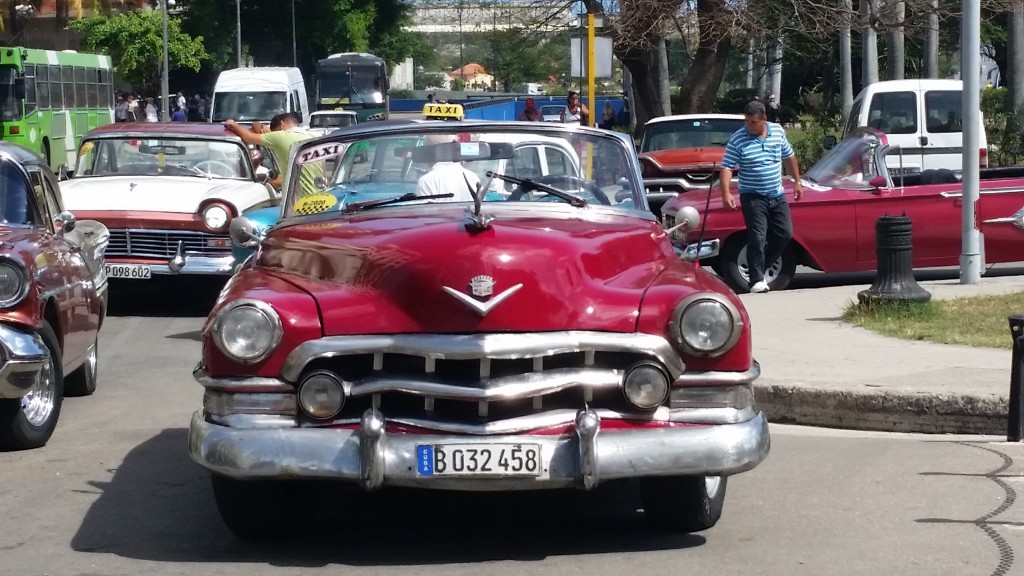
Dear Blog Readers,
On September 19th, I will be departing on the Papal Plane with Pope Francis and his entourage to Cuba and the United States. The entourage will include Cardinals, Bishops, Vatican Gendarmes, Swiss Guards in plainclothes, a doctor, the Papal spokesman, Vatican press office officials, a Popemobile driver, liturgical specialists (Mass helpers) and roughly 80 journalists.
I will be the Agency Television Pool Producer on the plane. My colleague, video-journalist Paolo Santalucia will be on the plane as well, and so will AP Rome Bureau Chief, Nicole Winfield, for AP wire. My AP photographer colleague, Alessandra Tarantino, who has provided me with a few of her extra photos this week for my posts, will be flying to Cuba and the US on her own to cover events.
On the ground in these locations AP is sending out an army of staffers to cover every breath the Pope takes. Yes, the Pope sneezes, and AP will be there to give you the details, the photos and the video.
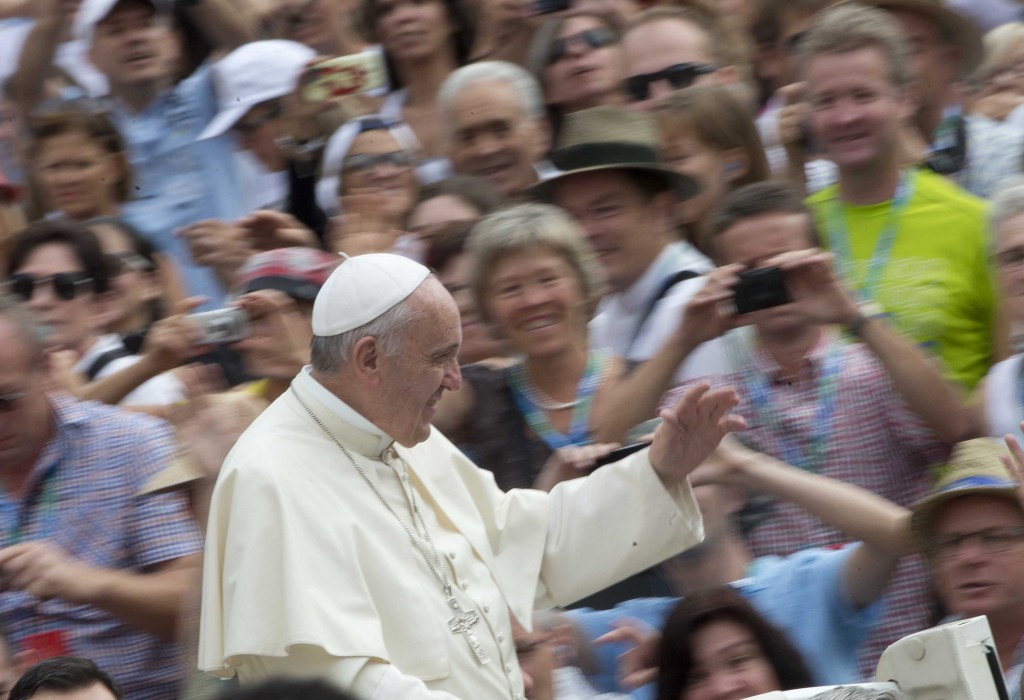
This will be my 20th trip on board the Papal plane. I started back in 1996 with John Paul II, did many with Benedict XVI and this is my third with Pope Francis. I will put my links to the blog posts I did some of those trips below.
Hopefully, when I get back I will be able to treat you all to a juicy, behind-the-scenes account of being in the Papal Entourage, filling you in on all sorts of details like why the Cardinals are always coming to the back of the plane, how the journalists conduct their tweet battles, the food we eat, the 5am pajama line to get the Pope’s daily speeches, the tussling to get to ask the Pope a question on the plane and especially what the Pope does when he comes back to see us.
This, however, is going to be a detailed post that I am doing it mostly for myself, walking through the entire trip looking at where the Pope will be going, why he is going there, what he will do and what issues might come up. Some of you may want to stop reading now, others might want to just scroll to the parts you are particularly interested in.
So, here we go….
On September 19th the Pope will fly from Rome to Havana, Cuba. He is the third Pope to visit Cuba. John Paul II was the first Pope to go to Cuba making his historic visit there back in 1998 when he met with Fidel Castro and said Mass in Havana’s famed Plaza de la Revolucion. John Paul II asked Fidel Castro if Christmas could be reinstated as a holiday in Cuba and his request was granted. Pope Benedict XVI also visited in 2012. He met with Fidel Castro on March 28th, 2012. In the photos of the meeting, Castro still looks pretty lively. Following Pope Benedict’s visit, Cuba reinstated Good Friday as a public holiday.
Pope Francis’ trip comes on the heels of the historic rapprochement between the United States and Cuba ending over 56 years of tensions. Both President Raul Castro and President Barack Obama gave credit to Pope Francis for pushing forward talks that led to the re-establishment of diplomatic relations this year. In his address to the nation Obama said the Pope’s, “moral example shows us the importance of pursuing the world as it should be, rather than simply settling for the world as it is.”
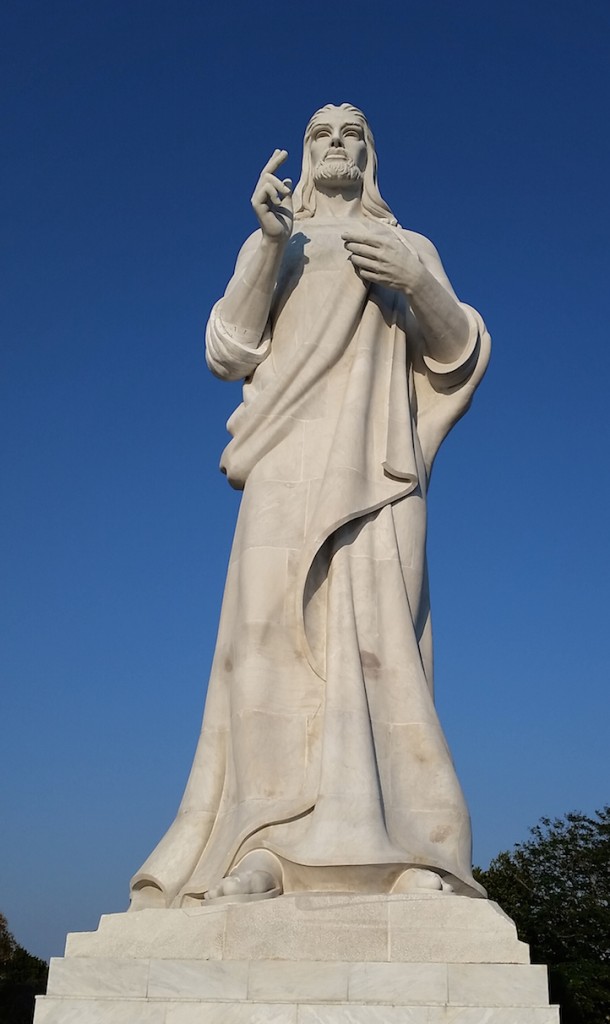
People I spoke to who have recently been to Cuba have said that Cubans are thrilled about the rapprochement with the US and excited about the opportunities they will have, but they know little about the Pope’s role. This is mostly because of their limited media access they have. They have practically no internet; TV is government controlled, and there is one dominant newspaper called “Granma” which describes itself as “the official voice of the Communist Party of Cuba Central Committee.”
By the way, “Granma” is the name of the boat that Fidel Castro, Che Guevara and dozens of other revolutionaries took from where they were living in exile Mexico to Cuba in 1956 to lead the revolution against the corrupt and violent dictator Fulgencio Batista. It is on display in downtown Havana behind the Museo de la Revolucion, but I doubt the Pope will have time to check it out.
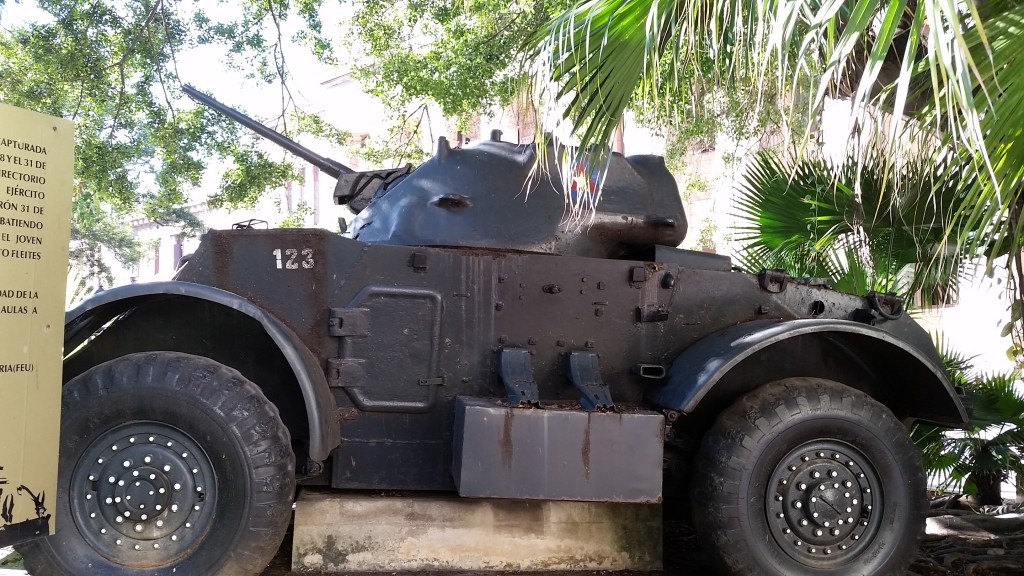
It is unlikely that anyone in the Papal Entourage will have much time to break away from the scheduled events and see much of Cuba. One recent visitor said that the Cubans are painting all the fronts of the buildings in the places where the Pope will pass and urged journalists to get back behind those buildings to see the real Cuba. I hope we have the chance.
The Pope’s trip to the US was scheduled before the Vatican announced the stop in Cuba first. For Cubans this decision is significant. One official suggested that it is the Pope’s way of supporting David before Goliath, to draw more attention to the historic rapprochement and to show the world that two enemies can leave their disagreements behind them and move forward. “This is the Pope’s way of showing that good is possible,” one Cuban said to me, “a symbol of hope for the world.”
On his first full day in Cuba, the Pope will start off with a Mass at the Plaza de la Revolucion (Revolution Square). The same place where John Paul II held a mass in 1998 with Fidel Castro seated in the audience. Fidel Castro is now 89, not in excellent health so will probably not be at any official events, but both Cuban and Vatican officials have indicated to me that if there is a way to organize a meeting between the Pope and Fidel, they will do it.
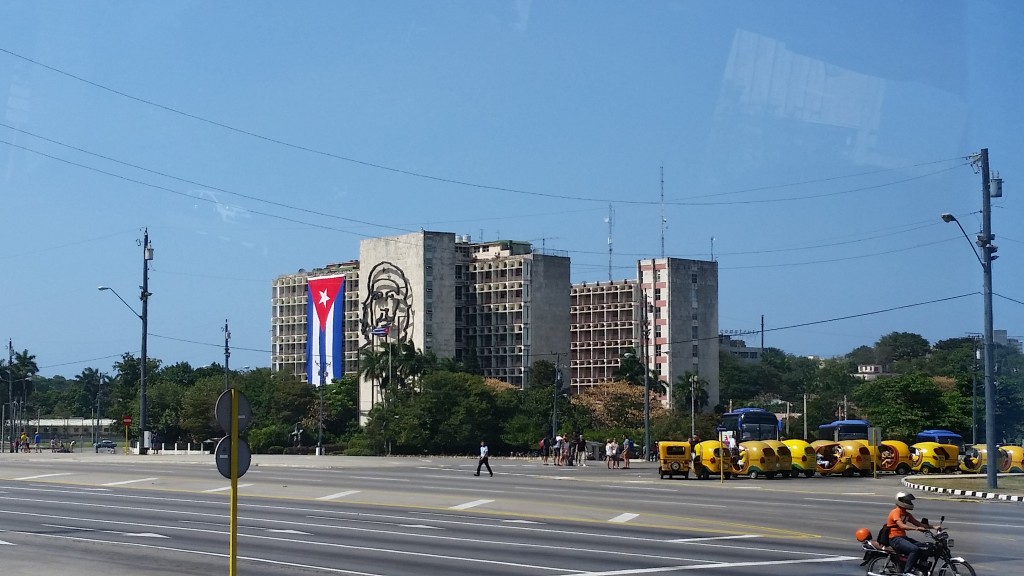
In the afternoon the Pope will pay a visit to President Raul Castro at the Palacio de La Revolucion in Havana. Raul Castro met with the Pope at the Vatican this past May and came out singing the praises for the Latin American Pope saying, “If the Pope continues this way, I will go back to praying and go back to church. I am not joking.”
A Cuban source told me this week that the 84-year-old Raul Castro was definitely not joking, so it will be interesting to watch the behavior of the octogenarian communist leader during the Pope’s visit. Raul Castro has been slowly opening up his country’s economy and has said he will step down in 2018 when his term as President ends. This leaves a lot of big question marks about Cuba’s political and economic future.
I asked some Cuban officials if they thought the Cuban government would ask the Pope for help in convincing the US Congress to lift the embargo. After all, the Pope is going straight from Cuba to the US where he will be speaking to a joint session of Congress. He could put in a good word for them. I was told “absolutely not” that the Cuban government does not need to ask anyone for help, the embargo will eventually be lifted, but they would never ask the Pope to get involved.
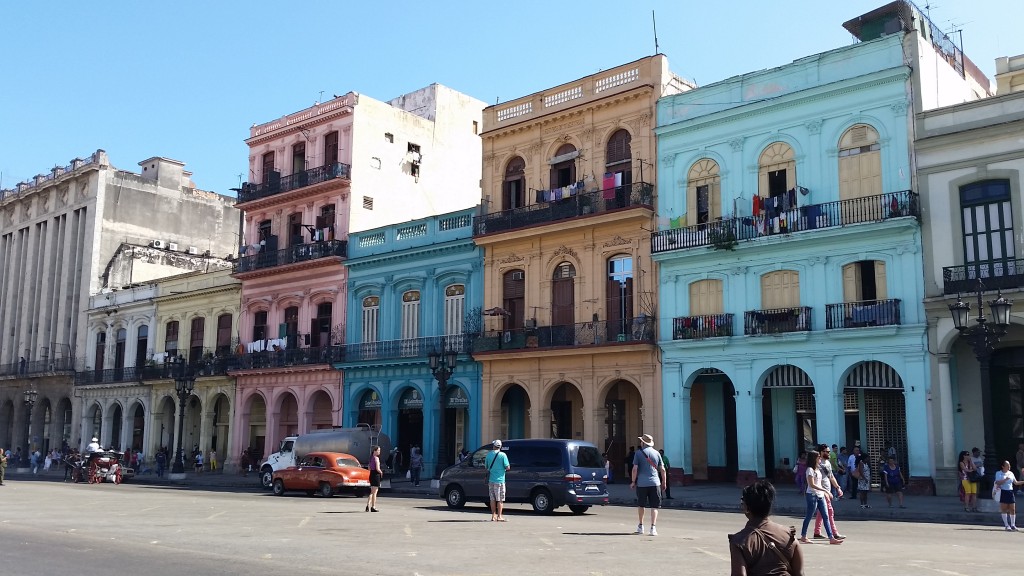
A Cuban government document given to the journalists who will be accompanying the Pope says the population of Cuba is 11, 247,925 inhabitants and 110,922 square kilometers. It is incredible to think how this tiny island with such a small population has played a major role in geo-politics in the past century.
The document explains that the Cuban population is made up of descendants of the Spanish colonizers, African slaves and the indigenous population. This mix has had an interesting influence on religious beliefs, but more on that later.
In the afternoon of September 20th, the Pope will celebrate vespers with “Priests, Men and Women Religious (nuns) and Seminarians at the Cathedral in Havana. Given the suppression of the church after the revolution, I will be curious to see how many priests, nuns and seminarians there are in Havana.
Surely life cannot be easy for Cuban priests and nuns. It is hard enough for most Cubans to make ends meet. Apparently the average salary is $20/month. On a recent trip there, my sister took a taxi driven by a man who said he was a priest and had become one after taking an Internet course with a seminary in Arizona. I guess there are many ways to make ends meet.
I have heard from both Catholics in Rome and Cuban officials that an interesting part of this trip is the slow but steady development of the relationship between the Cuban government and the Catholic Church. After the 1959 revolution Cuba was declared an “atheist” state and religion was suppressed. In 1992 the Cuban constitution was changed to make it a “secular” state, instead of an “atheist” state and religious practice has steadily grown.
The Catholic Church has been working with the Cuban government for the past few decades to improve relations and apparently have a “tacit agreement” not to criticize each other. A Cuban official told me that the relationship is “not perfect” but there is now “trust.”
I guess that means the Catholic Church authorities in Cuba have not been particularly vocal on the question of human rights in Cuba. A quick glance at the annual reports of Amnesty International and Human Rights Watch give a good indication that there is improvement to be made.
According to the Human Rights Watch 2015 report (based on 2014):
“Members of the Damas de Blanco (Ladies in White)—a group founded by the wives, mothers, and daughters of political prisoners and which the government considers illegal—are routinely detained before or after they attend Sunday mass. On May 4, for example, more than 80 women were detained before attending mass throughout the island. On July 13, 129 members of the group were detained as they prepared to attend commemorative ceremonies honoring Cubans who died attempting to leave the island in 1994.”
Following Pope John Paul II’s visit in 1998, Cuba released some 100 prisoners and prior to Pope Benedict’s visit, the Cuban government granted amnesty to some 2900 prisoners. A source told me that we are likely to see another prisoner amnesty around Pope Francis’ visit.
I could be wrong, but after speaking with a number of people, I have the impression that the Pope will not tackle the question of human rights in Cuba head on so as not to derail the slow but steady progress that is being made in State-Church relations, but sometimes Pope Francis surprises us all with his impromptu, off-the-cuff, off-script remarks.
The final event on September 20th will be a meeting with young people at the Felix Varela Cultural Center. Meetings with young people are always a high point for Pope Francis and this should be a lively event where Pope is likely to find ways of engaging young people as he often does – whether it is with a selfie, exchanging his white zucchetto (skull-cap) or a trying on a football jersey.
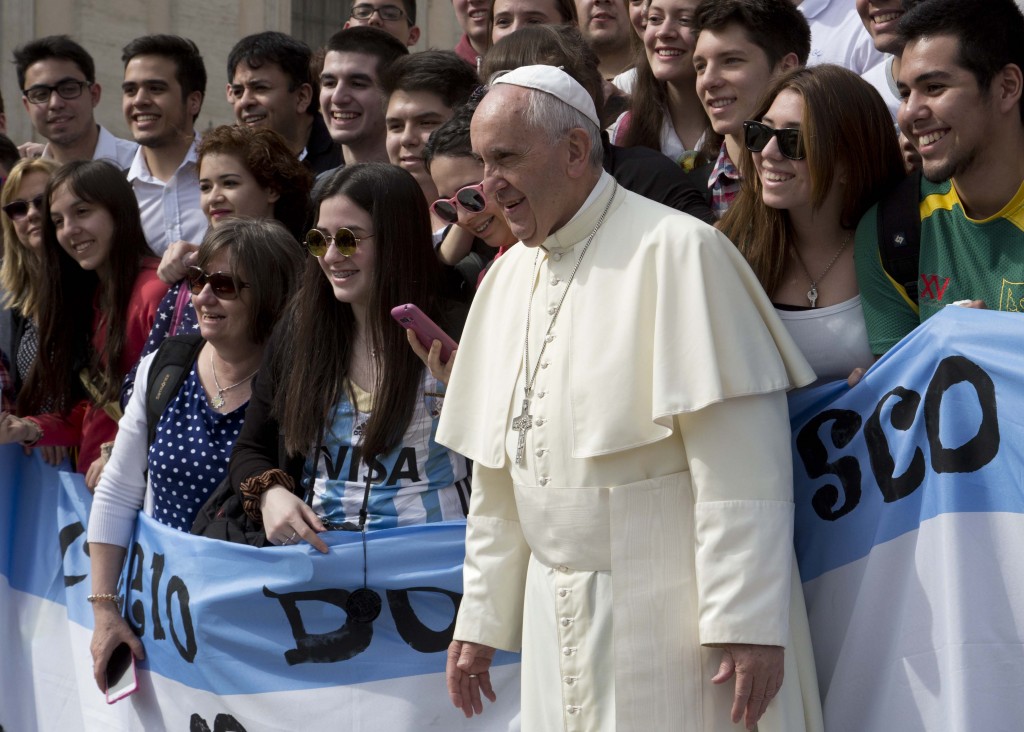
On Monday, September 21st, the Pope will fly to Holguin in Eastern Cuba. The Eastern province of Holguin is famous because Christopher Columbus first landed there on October 28, 1492. It is also the province where both Fidel and Raul Castro were born, sons of a wealthy sugar plantation owner.
Pope Francis will say Mass in the Plaza de la Revolucion and bless the city from “Loma de la Cruz” (The Hill of the Cross). “Loma de la Cruz” is a hill that rises to 261 meters above sea level and is reached by climbing up 458 steps. Given that the Pope has only one lung and a bad knee, I certainly hope they find an alternative route up the Hill for him or it is going to take a long time.
I also hope they find another route up the hill for me since I will be dragging my computer, backpack with batteries, cables, microphone and Wi-Fi devices. I do have a backpack with wheels that I use on these trips, but they are not very useful on stairs.
At the top of the stairs there once was a wooden cross that was erected by a Franciscan friar Francisco Antonio Alegria in 1790. According to Vatican documents, this was a Spanish custom to ward off disease and natural disasters. The wooden cross rotted away, a second cross got hit by lightning and now the third cross in that spot, a cement one, will receive the blessing of Pope Francis.
From Holguin, the Pope will go on to Santiago de Cuba where he will go with the bishops and papal entourage to the shrine of the “Virgen de la Caridad del Cobre”, or “Our Lady of Charity,” or “Our Lady of El Cobre.” “Cobre” means copper in Spanish. And if all those names are a mouthful for you, you can just call her “Cachita”. Cachita’s sanctuary is in the mining town of El Cobre outside of Santiago.
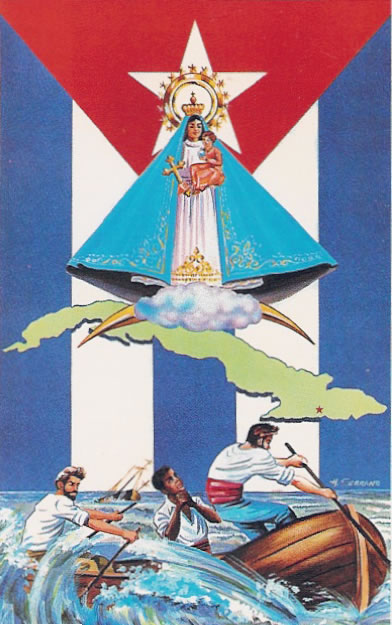
I have read several versions of the legend behind the virgin so here is my summary: In the early 1600s three boys (known as the three Juans) were out in a boat in the Bay of Nipe gathering salt to be used for workers —Indios and slaves– in the nearby copper mines. Two of the Juans were of Indios descent, one of African descent. When a storm came up their boat was tossed on the waves and they thought it was the end. Then suddenly they saw something floating in the water. It was a small statue of the Virgin Mary holding the baby Jesus with the inscription Yo soy la Virgen de la Caridad, (“I am the Virgin of Charity”). The boys made it safely to shore and since then the Virgin has been an object of veneration and credited with many miracles.
Pope John Paul II placed a crown on the head of the statue of the virgin when he visited in 1998. Pope Benedict XVI celebrated the 400th anniversary of the discovery of the statue when he visited in 2012. Over the years many people have left offerings to the virgin to thank her for miracles. Apparently there is a display of crutches, wheel-chairs, medals, and diplomas. I have read that the mother of Raul and Fidel Castro left a golden guerilla fighter at the feet of the statue as her sons were battling the dictator Batista. I will ask for more details on that when I am there.
When Ernest Hemingway won the Nobel Prize for literature for “Old Man and the Sea” he placed his medal at the foot of the “Virgin de La Caridad.”
We will see if Pope Francis leaves something.
Apparently it is not just Catholics who are devoted to the Virgin of Caridad. In Cuba many people believe in something called “Santeria” a syncretic religion introduced by slaves brought from Africa to Cuba.
Laura Daranas, a Cuban art historian who works in Havana explained it to me like this:
“Since the slaves were not permitted to worship their gods here in America and they were forced into the Catholic faith, some of them created a system of identification between their ancestral gods and goddesses (called orishas) and the saints of the Catholic tradition. Eventually this led to the formation of the highly ritualized religion we know today as Santeria or Regla de Ocha. Santeros (practitioners of Santeria) walk into a church today and they pay their respects to the Virgin of Charity, the Patron Saint of Cuba, but they also pay their respects to the cheerful and voluptuous Ochun.”
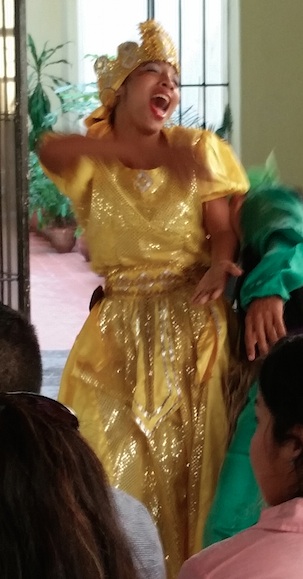
Daranas also shared with me a fascinating tid-bit that ties together the rapprochement with the United States, Catholicism and Santeria. This is what she said:
“The day Castro and Obama made their pronouncement, December 17, is a very important day for the Cuban people. It is the day of Saint Lazarus or Babalu’ Aye’ as this saint is known in Santeria. Second only to the Sanctuary for the Virgin of El Cobre, the sanctuary of Saint Lazarus in El Rincon (on the outskirts of Havana) is a great center of pilgrimage. The priests know that a large part of the thousands of people who ride, walk or crawl their way there on that day are actually praying to Babalu’ Aye’, an African Orisha (deity) who also suffered from a skin illness as Lazarus the beggar did in Jesus’ parable. Babalu’ Aye’ or Lazarus is called “El Milagroso”, the miracle worker. For many people the events of last December 17 were a miracle, a gift from Saint Lazarus to the Cuban people who have long suffered and devoutly carried out their promises to him,”
And now the man behind that rapprochement “miracle” is headed their way.
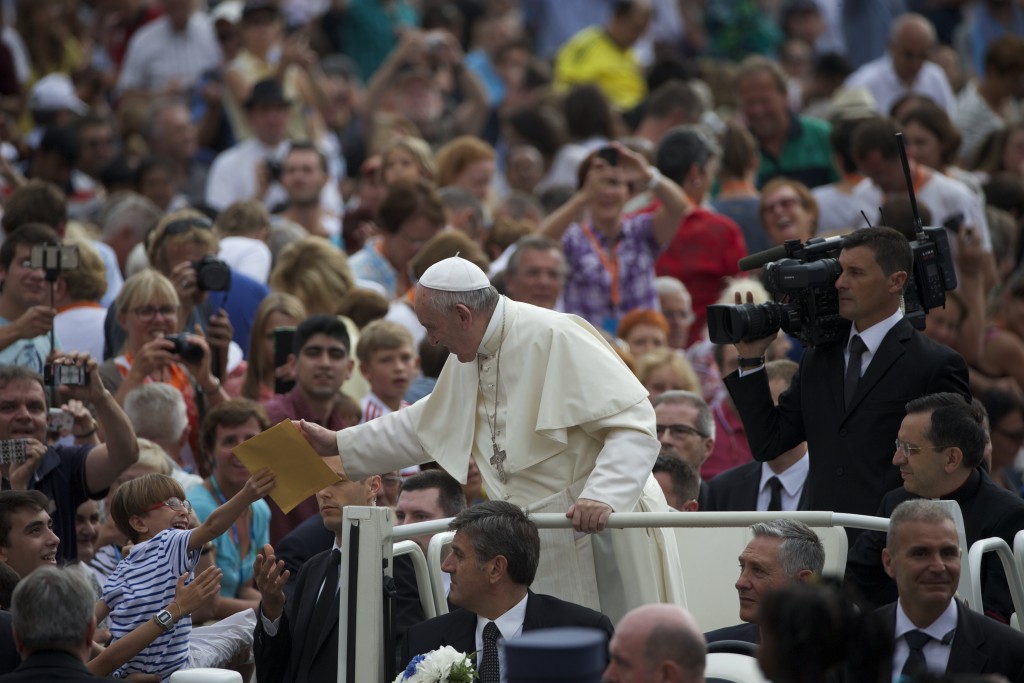
On his last day in Cuba, the Pope will say Mass at the Virgin’s shrine in Santiago, meet with families at the Cathedral and bless the city from the Square in front of the Cathedral.
At 12:30pm local time Pope Francis will depart from Santiago de Cuba for Washington D.C.
**********************************************************************************************************
A special thanks to my sister, Gwen Thomas, who visited Cuba this spring with a group of University students and provided me with a lot of background information, contacts, and some great photos. Thanks also to my colleague, AP photographer Alessandra Tarantino, who continues to give me all her extra photos of the Pope during his weekly audience that are not used by AP.
**********************************************************************************************************
Earlier blog post on traveling with Popes:
A White Elephant in a China Shop
Touching the Walls – Pope Francis in the Mideast
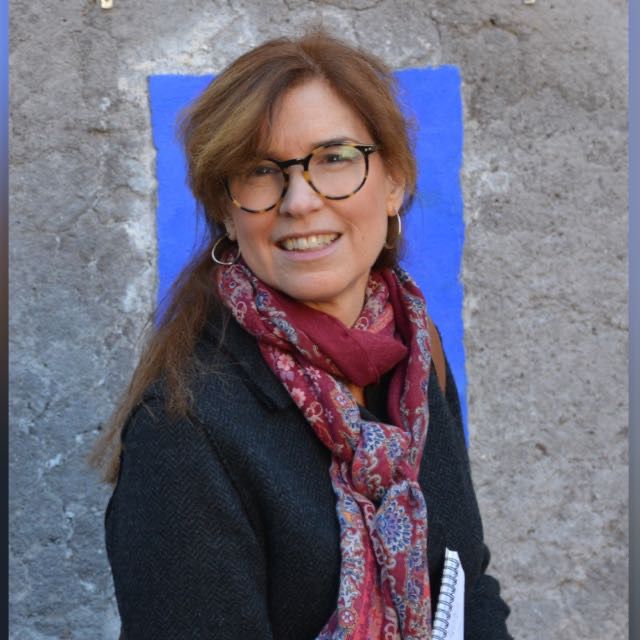
Had just begun wondering if you were going to be on that trip. I’m so glad you are. Your eye for ‘special’ details is absolutely wonderful.
Can’t wait to be a part of the Pope’s Cuban visit through your eyes.
Have a great time.
Thank you Martha. I hope to be able to do some good blog posts when I get back.
Oh Trish
What an exciting trip. I will be in Europe when you’re in this hemisphere, so I’ll be eagerly following your blog posts once the trip starts. I know you’ll be able to give us great insight and lots of nitty gritty details of what it’s like to be on the same plane as the pope. Break a leg girl!
Thank you Linda!!
Trisha, I don’t know what to say except that this is quite an honor, and I bet it will be a trip of a lifetime. I can’t wait to hear more. This Pope is just unstoppable. And so are you.
Thank you Adri. It definitely is an honor. I am very excited to cover this historic trip.
Fabulous news and fabulous post — thank you!
May I, as a faithful (albeit mostly lurking!) reader of your blog, request just one tiny thing.
Please please puleeze, do NOT let the likes of Philip Pullella get their way this time — like the last time! — and waste the opportunity to engage the Pope in interesting conversation with the same ol’ tiresome questions about “the gay” and other likewise tiresome issues that have been regurgitated already for the umpteenth time. Surely, you can come up with questions that are much more enlightening and delightful, can you not?
Wanna know what *I* would ask were I to be in that plane? Something like these:
1. About what gets (or not) on his papal agenda: During his return flight from Latin America this past July, the Pope said he would now begin to study for his trip to the US and Cuba. How has he done that? And more generally, not just for papal trips but for important church matters, where and how does he get his information, for example? He said he doesn’t really read the papers, so then, how does he make sure that he’s getting info from many and varied sources to get a fuller picture of any given issue at hand? (And is there any truth to the rumor that he’s deploying Jesuits to be his eyes and ears all over inside and outside the Vatican?)
2. About his thoughts on liturgy: To what extent and in what ways is he involved in planning various papal liturgies, or making particular liturgical decisions? For example, what’s with the new altar candle arrangement and the new crucifix? The choice of language (Spanish vs. English vs. Latin, for example) to be used at a particular liturgy? More broadly, just what exactly did he mean when he reportedly told Cardinal Sarah (of the liturgy congregation head) to continue the good works of Pope Emeritus Benedict 16? Surely, he didn’t mean the so-called “Reform of the Reform” movement/thing-y that got out of control during Benedict’s reign, did he? And while at it, how much does he actually know about the so-called “liturgy wars” and their battle lines? About the whole seemingly never-ending saga surrounding the New Translation of the English Missal?
3. About his own spiritual journey: He told Father Antonio Spadaro that he “lived a time of great interior crisis” when he was in Cordova back in the day. Could he maybe elaborate on that a bit more — to help those who might be going through their own darkness in their faith journey?
4. Kinda relatedly, about his own mystical experience: Remember that now in/famous Eugenio Scalfari La Repubblica “interview”? The one where some things turned out to be true and other things, completely fabricated? In it, the Pope supposedly talked about his own mystical experience (of being filled with a great light, while praying). Could he tell us a bit more about that experience, if only to set the record straight? And could he maybe share another experience he’s had, if any, where he felt God’s presence most strongly since then?
5. About the grumblings often heard among the faithful (especially, one admits, on the internet): What would he say to those faithful people in the pew who remain frustrated that the Pope has not wielded his “supreme, full, immediate and universal ordinary power” to banish those churchmen who are known perpetrators of much harm — like Cardinals Law, Sodano and Bertone, to name just a few (and you must name them!) — into oblivion, and instead, allowed them to continue on as if nothing had happened? Marred by such frustration, how is one to reconcile justice and mercy, truth and forgiveness?
6. About his reform efforts and initiatives and the resistance therein: During his return flight from Rio, the Pope said one couldn’t find much resistance in four months. Now, two and a half years in, with much more said and done, how much resistance has he found now? And how does he deal with said resistance? (Oh and by the way, does it amuse him as much as it does some of us that certain prelates (cough/Cardinal Burke/cough) can’t seem to stand him?)
And so on and so on and so on. Well, you get the idea.
So anyway, I shall be counting on you, and look forward to reading your reports, especially the juicy scoops from behind the scenes!
PS — why do the Cardinals (and who are they) wander into the back of the plane? :D
Beth — What an amazing bunch of questions. I think you know more about the Vatican than I do. A quick note on the questions on the Papal plane. The Pope’s spokesman says we have to divide up into language groups –English, French, Spanish, Italian, and German. He also says we have to keep the questions exclusively to the place he has just visited (this rule is often bent). When the Pope comes back to take questions from journalists the first questions he takes are a couple from journalists from the country he has just visited. Then they begin a rotation of language groups. Each language group has two questions and has chosen two different journalists to ask them. The English language group negotiations usually start in the morning of the last day of the trip with everyone throwing in a long list of questions and then they slowly get whittled down. You are right, the English language group often seems obsessed with all questions related to homosexuality and the church. I have heard the Italian group making fun of us about that. I have also heard the English language press making fun of the French group for being cloying in their questioning of the Pope. Often the questions that bring the most news are those by the journalists from the countries he has just visited. They just tend to be fresher, more unexpected. For example, when he came back from Turkey, I thought the best question was asked by a Turkish journalist about Islamophobia.
On the Cardinals and Bishops coming to the back of the plane. Some of them like to schmooze with the journalists, but the real reason is that they have to use the bathroom. The one in the front is just for the Pope. Actually, it used to be that way — I will have to double-check, maybe Francis has changed that rule.
The Pope’s visit to Cuba will probably be really interesting, looking forward for your article about that! I am also curious of what will be the reaction of him arriving in the US – I was thinking of going to Philadelphia but probably won’t, so I hope you will write something about that too. And have a good trip!
Giupy, I think you should go to Philadelphia. It is going to be an interesting, historic trip and you should be a part of it. I am going to get going on the US post and hopefully will have it done by Sunday.
Yet again, another great post Trisha.
Let me also note here that Laura Daranas, the Cuban Art Historian with the Museo de Bellas Artes in Havana, who you quoted above was our first guest lecturer while in Cuba. She really provided all of us with a framework for better understanding Cuba. In her lecture, she helped us understand Cuba in terms of its long history influenced by so many outsiders – Dutch, English, French, Spanish, Arab cultures (mostly influences through Spain), Africa, the US… Cuba has been a gateway for world travelers/seafarers. One of the things that Laura explained to us so eloquently was how the Cuban culture has taken cultural elements of all these different cultures that have landed on the island and molded them into their own Cuban identity. As she explained to us, one can see the influences of all theses cultures in art, architecture, dance and perhaps most significantly given the Pope’s visit, in religion. While Laura is an expert art historian, she is highly knowledgeable about Cuban history and culture.
I hope Trisha that you do get to meet Laura while there, you two would enjoy meeting each other.
And my offer still stands to be your assistant for the trip! I would even offer to carry your equipment bags up those 458 steps. Just say the word… :-)
Hugs to the best sister in the world. You make your big sis envious of all your adventures and proud of all you do.
Thank you Gwen, I could not have done this post without you!! And I wish you could come with me, we would have quite a laugh lugging stuff up those stairs.
. . enjoy the (working) jolly, Trisha – look forward to the insights and photos.
Thanks Alan, it will be hard work, but I love it.
Trisha,
Have a safe trip and wonderful experience! I look forward to your sharing of the trip. If you have free time, please call or stop in. You are always welcome!
Love,
Cyndy
Thank you Cyndy. I am still working on the post on the US part of the trip. I would love to see you when I am in Pennsylvania. Any chance you might be coming to one of the Pope’s events?
Once again an interesting post. I’m glad to know what is going on when the Pope is is Cuba. And including some of the other info–White Ladies (whom I’ve heard of), the combo ideas of saints and other cultural “greats” such as Lazarus and Babalu Aye–added more interest and understanding. Hope to read some info about the U.S. part of the trip too. And I look forward to your reports after you return. Despite having to lug the equipment, enjoy the trip!
A presto,
Joan
Thank you Joan — I am working on the post on the US leg of the trip. I think it will be less interesting because so much has already been reported. I think my post when I get back might be more interesting– but by them you may all be sick and tired of hearing about the Pope.
Wow, I want to commend Beth on her really great post with those excellent thought-provoking questions! I totally agree with Beth’s post and the focused wide ranging questions are really what I would like to hear rather than what seems like the same questions from the American press over and over again.
Trisha, I am so excited for you and the upcoming trip! ABC News did a spectacular virtual “town hall” with the Pope last week, airing on Friday. It was comprised of a group of homeless people in Los Angeles, a small church group (including immigrants) near the border in Texas, and another small Group of students at a Catholic school in Chicago. The Pope was so engaging and answered some really interesting and challenging questions with some inspiring answers. He really is so amazing. But I feel like he will have a thing or two to say to the entitled, capitalistic society here in the good ole US of A. I don’t think he will hold back at all…it should be quite interesting indeed!
Hi Kay, I totally agree with you. Beth’s comment is fascinating, her questions are excellent and she clearly has an in-depth knowledge of the Vatican. I have no idea who Beth the mystery reader is, or what is her connection to the Catholic Church, but she certainly is impressive. I am grateful to have her as a reader. I will print out her questions and take them with me.
I only saw a clip of the Pope’s Town Hall meeting but I am not surprised that the Pope was impressive. He is more comfortable dealing with normal people rather than the powerful and wealthy. And I agree with you, he may have a few things to say that will shake things up in the centers of power in New York and Washington during his visit.
LOL and thank you — both of you — for your kind words.
I’m just an ordinary Catholic gal who loves God and loves her Holy Mother Church, despite its very many faults and failings and even as she perpetually struggles to fully understand (and come to terms with) some of its teachings, and who can now also say she loves unabashedly the current leader of her beloved Church, a holy man truly worthy to be called the Vicar of Christ.
And you know, when you love something, you just can’t get enough of it. You want to learn everything about it, which, thanks to the wonder of the Internet, plus the ever-growing Catholic blogosphere, has become so pleasantly easier these days. In fact, that’s pretty much how I found my way to your blog.
But anyway, enough of me rattling on about the mysterious me (heh heh). Like I said, I am super excited about the Pope’s upcoming trips and eagerly await your superb reporting — both on the ground and up in the air!
Thank you Beth!! I am honored that such a smart, thoughtful person reads my blog.